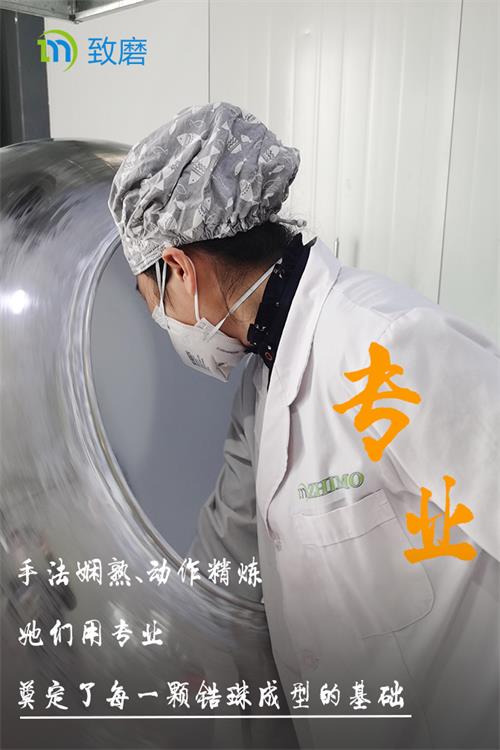Process description: powder and various additives are mixed and sprayed and granulated, then the powder is added to the metal mold to pre-form the ball, and then the demolded body is subjected to cold isostatic pressing to obtain the ball. Use this The green body prepared by this process has high density, and the fired ceramic ball has high density and good quality. The isostatic pressing method has a large investment in processing equipment and a large post-processing cost. It is generally used to produce large-size and high-quality grinding media balls with a diameter greater than 10mm.

2. Roll into a ball
In addition to the forming process of the cold isostatic pressing process, rolling into balls is also an important forming method for ceramic balls. This method has the characteristics of production equipment, raw materials, simple operation, good sphericity, and easy sintering. Although the ball strength is not as good as cold isostatic pressure, the preparation cost is lower, and balls of various sizes within the range of 0.1mm-60mm can be produced according to requirements. Rolling into a ball is made from a mud section. The process is: adding powder, water, binder, plasticizer, lubricant, etc. into a mud mixer to mix into mud and aging to form plastic mud , Put it into a mud extruder to squeeze into mud sticks, and cut them into mud sections of the same length and diameter, and then put them into a rolling ball machine to roll them into ball blanks. This molding method mainly controls the diameter and diameter of the die of the mud extruder. Cut the length of the section to get a better consistency of the mud section, and the roundness of the rolled billet is also easy to control. However, due to the relatively low density of the ball billet, the sintering temperature needs to be increased to obtain a denser porcelain body, resulting in abnormal grain growth , It is difficult to prepare excellent wear-resistant microcrystalline zirconia. There is also a direct powder rolling method. The process is: use a simple and cheap rotating ball machine, first add prefabricated ball seed crystals, and then add ceramic powder while rotating the water mist, and the powder continues to stick. Attached to the surface of the seed crystal gradually grows, and finally a ball blank of the required size is obtained. By controlling the appropriate roll forming process parameters, a ball blank with high bulk density, good roundness and uniform size can be obtained. The principle of rolling into a ball is similar to that of making glutinous rice balls, but it uses a machine instead of hands.
3. Drops into balls
For very small zirconia grinding media beads (0.05mm to a few tenths of a millimeter), green ceramic beads can be formed by titration. For example, South Korea Sano uses the company's self-made 6nm high-purity ultrafine zirconia as raw materials. The zirconia ceramic microbeads produced by the titration method can be sintered at low temperature without pores inside, and have the properties of high density, high strength, high toughness, and low wear. Suitable for dispersion and grinding of high-performance materials such as electrode materials, multilayer ceramic capacitors, paints, coatings, etc.


